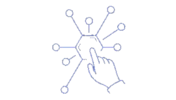“I want you to identify all of the data missing data in my database table” Serve Data that Isn’t There fetch Missing data In this scenario, the client had a database with all received transactions for a given time period. Transactions for a given till could start and end at
Author: themulewhisperer
What to do When CSV acts Silly We found an interesting issue in one of our tests. The plan was to dump a large CSV file at a location accessible to a database and then send the DB a BULK INSERT instruction, pointing to the source file. The issue
Under normal circumstances Dataweave mapping is straightforward; you simply point to the source variable or payload property you want and inject it into the output. However, there are times where you don’t know which source property you need to use at design time. In such cases, the required property
There are times when you need to fetch a file from your local file system on the application at runtime. In these cases, the Mule can look stubborn and confusing. For instance, some components (E.g. Transform components) allow you to navigate to the file in question and then display
The Mule is, by nature, a messenger; it carries messages (or information) from one isolated system to another… … and we all know what happened to the messenger in ye olde days! The messenger always got shot when delivering bad news. The modern IT landscape is not very different.
Recently, I was posed with an interesting challenge; transform this array of key/value pairs: [ { “key”:”Key1″, “value”: “Value1” }, { “key”:”Key2″, “value”: “Value2” } ] … into this object: { “Key1”: “Value1”, “Key2”: “Value2” } On the face of it, this should be easy. And yet…
What to do When Mocks Fail Many years ago, I worked on a project that used Mock Services extensively. We wrote our code against those mocks and all went swimmingly. Then we switched to the real service. That is when things went awry. The actual service were far less
Yak Shaving is a common problem in development teams and IT projects in general. To understand how we fall prey to Yak Shaving, consider the following example. John borrowed Jill’s lawnmower several weeks back, but has yet to return it. Jill calls him up and asks if she can
In light of how prevalent OAuth 2.0 is as an authentication method, I found it surprising how few articles exist, explaining how to configure it in MuleSoft — especially in the context of an HTTP client. The scenario In this scenario, we have an HTTP Request in our
“Leadership needs to think beyond technical capabilities when considering digital solutions to business challenges — and technology experts should advise holistically so that leaders can make informed decisions” Can Mule Do it? I have been asked this question many times in any number of different contexts. The answer is almost always,
